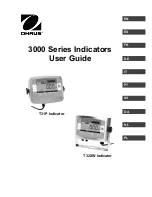
2
3
Thank you for choosing SEG Solar Photovoltaic Modules (hereafter referred to
r
a
l
o
S
G
E
S
y
l
p
p
a
o
t
w
o
h
n
o
n
o
it
a
m
r
o
f
n
i
e
v
i
g
o
t
s
i
e
d
i
u
G
s
i
h
T
,
)
”
s
e
l
u
d
o
M
V
P
“
s
a
PV modules properly.
Installers must read and understand this Guide prior to installation. For any
questions, please contact our technical department ([email protected])
for further information. Installers should follow all safety precautions describ-
ed in this Guide as well as local codes when installing a module.
Keep this Guide For future reference (care and maintenance) and in the event
of sale or disposal of the PV modules.
This document is applicable to the following PV modules:
• The PV module is used in systems operating at greater than 50 VDC or 240 W
where general access is anticipated. The PV module is certified for safety
through UL 1703 and within this application class are also certified to meet the
requirements for fire safety Type 1 or 2.
• The PV modules shall be properly grounded in accordance with the instruc-
tions in this Guide or the requirements of the National Electrical Code.
• Installing PV modules requires specialized skills and knowledge. Installation
should only be performed by qualified personnel. Electrical connections require
a licensed electrician where applicable according to local code and law (i.e. the
NEC for the USA and CEC for Canada).
• Installers should assume all risk of injury that might occur during installation,
including, but not limited to the risk of electric shock.
• One single PV module may generate more than 30V DC when exposed to
direct sunlight. Access to a DC voltage of 30V or more is potentially hazardous.
• PV modules which convert light energy to DC electrical energy, are designed
for outdoor use and can be mounted on the ground, rooftop, vehicles or boats,
etc. Proper support structure design is the responsibility of the system design
ers and installers.
• Do not use mirrors or other magnifiers to concentrate sunlight onto the PV
modules.
• When installing the PV modules, comply with all local, regional and national
statutory regulations. Obtain a building permit if necessary.
• Only use equipment, connectors, wiring and support frames compatible with
the PV modules.
• Do not lift the PV module by grasping the module’s junction box or
electrical leads.
• Do not stand or step on the PV modules or place heavy objects onto it.
• Do not drop the PV module or allow objects to fall on the PV module.
• Do handle with care when moving, transporting and installing the PV mod-
ules.
• Do not attempt to disassemble the PV modules and do not remove any
attached nameplates or components.
• Do not apply paint or adhesive to the PV module top surface.
• Do not scratch or hit the back sheet.
• Do not clean the modules with chemicals.
Definitions:
UL INSTALLATION GUIDE FOR SEG
PHOTOVOLTAIC MODULE
UL INSTALLATION GUIDE FOR SEG
PHOTOVOLTAIC MODULE
-XXX: Module power
-HV: High voltage(1500V)
-BMB:60pcs (120 half cell)
-BMC:66pcs (132 half cell)
SEG-XXX-BMB-HV
SEG-XXX-BMD-HV
SEG-XXX-BMC-HV
-BMD:54pcs (108 half cell)
• Do not drill holes in the frame. This may reduce the frame mechanical
strength and cause cells to crack due to vibration.
• Do not break the anodized coating of the frame (except for grounding con-
nection), this may cause corrosion of the frame.
3


























